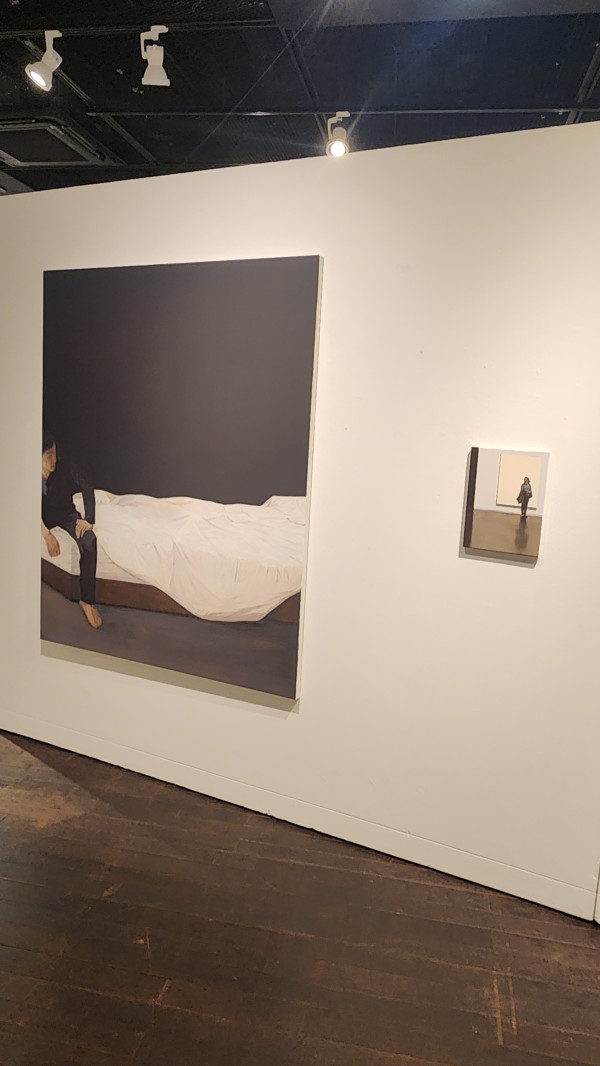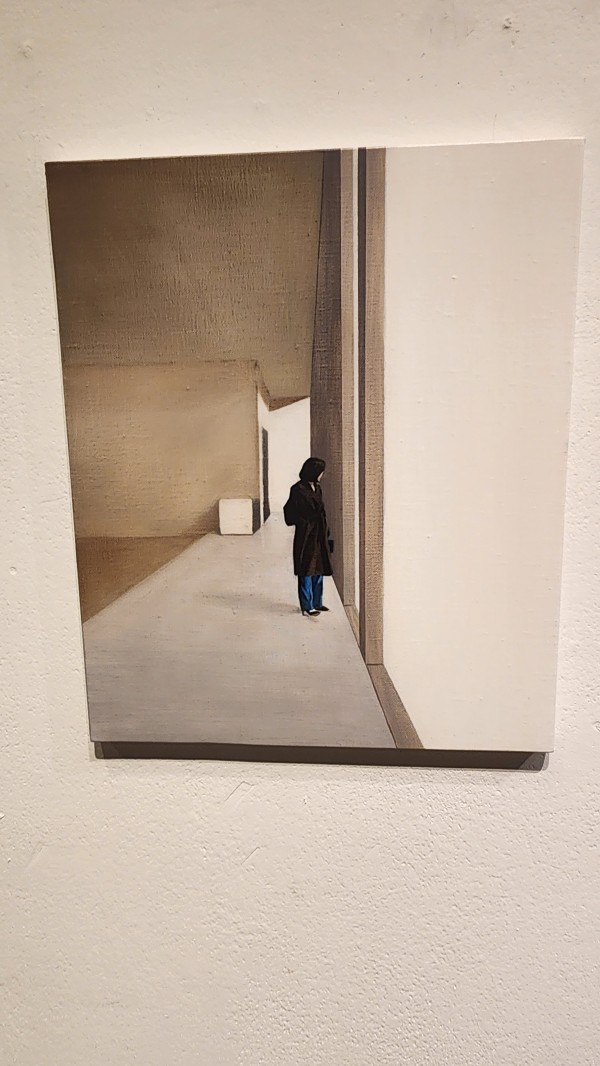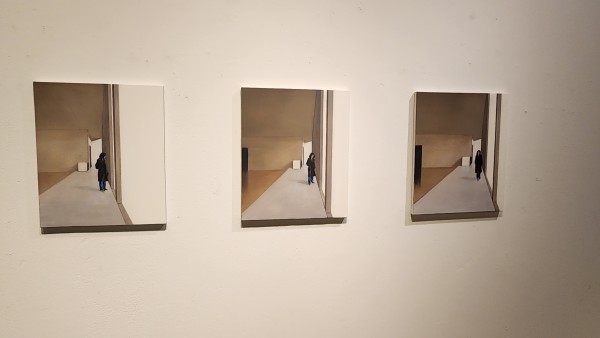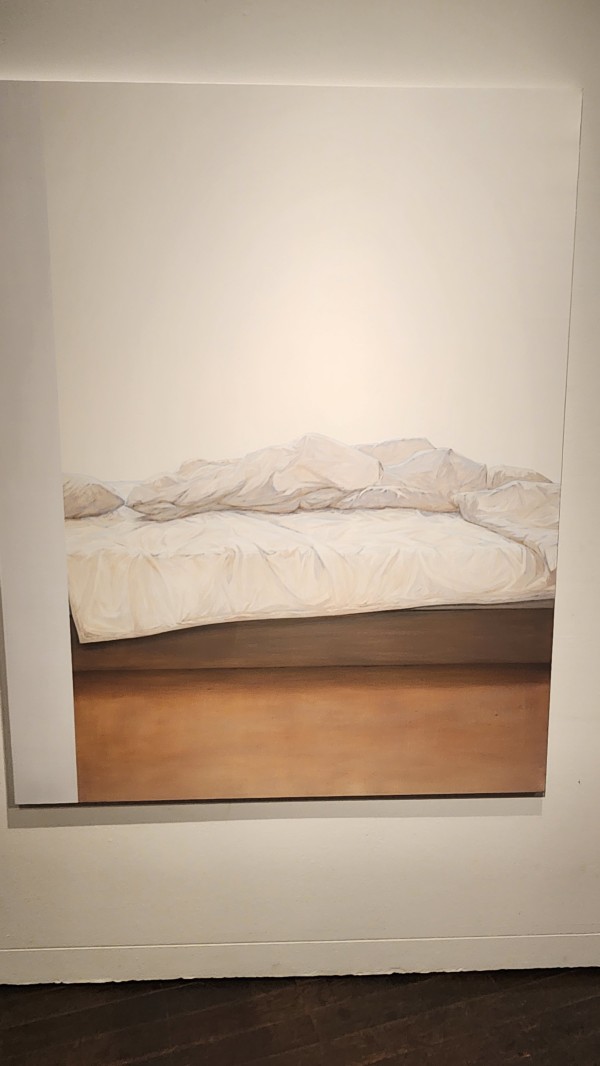
Oh Seung-eon gathers fragments of everyday life—ordinary images encountered in passing—and reshapes them through the lens of his lived experience, shifting emotions, and fleeting curiosities. His work unfolds like a diary of perception, transforming the mundane into layered reflections of self and circumstance.
Last month, the Insa Art Center (41-1 Insadong-gil) presented Loose Basin, a group exhibition running from the 16th to the 3rd.
Six artists working in and around Cheongju were paired as duos—Sayoon-taek × Lim Yoon-mook, Choi Min-geon × Oh Seung-eon, Kim Yoon-seop × Han Yi-kyung—inviting audiences to observe conceptual, material, and formal exchanges across their practices, while considering the future trajectory of regional art.
An artist talk during the opening featured critic Lee Yoon-hee, who guided a conversation around the subtle threads of solidarity between the artists, their shared regional grounding, and the intersections of locality and contemporaneity.
Within this context, Oh Seung-eon reflected on his practice, sharing personal motivations and the emotional
undercurrents driving his path as an artist.

A Painter Marked by Loss, Healing, and the Weight of Time
A young artist contemplating loss and recovery, Oh has entered a deeper emotional register in recent years.
The aftermath of the pandemic accelerated the timeline of life for him—pushing reflection into sharper focus, making emotional residue more present.
At the center of his work lies atmosphere.
While color, form, light, and technique all matter, he believes composition is the axis that shapes mood most decisively.
Empty space, scale, placement, angle, and the spatial rhythm of objects—these subtle changes recalibrate emotional tone, guiding viewers toward the feeling he hopes to evoke.
Each painting begins with a story.
Sometimes the narrative wants to unfold lightly; other times, with gravity. As the emotional direction clarifies, he begins layering color and form, slowly allowing the image to emerge. In balancing story and mood, the work finds its shape—quietly, gradually.
Since 2023, he has lingered on the emotional remnants left with those who stay behind.
“The loss I experienced still hasn’t settled. I paint someone who hasn’t sorted those feelings—someone simply sitting with what remains.”
Crumpled bedding, scattered scenery, suspended viewpoints—his images hold paused moments, the stillness of grief, and the fragile pivot between sorrow and return.
“Time dulls everything. It's bitter, but inevitable. The memory stays, yet one day you find yourself walking forward again.”
Oil Paint as Emotional Flesh Oh chooses oil over acrylic
“Acrylic dries hard, almost plastic. Oil has softness—and depth. It suits the emotions I want to hold.”

Working in Community, Yet Against Uniformity
Participating alongside Cheongju-based artists, he appreciated the exhibition’s structural dialogue between painting and sculpture
“We shared an approach—dividing space and perspective. The language differs, but the flow connects.”
Still, he speaks candidly about the realities of being an artist in Korea: “Studio rent, materials—over a million won a month, easily.
To paint, you need income; but working limits time to paint.” He also critiques the market’s trend-driven tendencies
“Trends shift fast—abstraction, media work, monochrome. When something becomes popular, many rush to follow. It’s called diversity, but often feels like a lack of real identity.”
Even support structures don’t always serve emerging artists: “Some studio programs end up going to already established artists. Space should go to those who truly need it.”
Continuing, Quietly and Resolutely Oil painting remains central to his journey.
“If the chance comes, I’d love to show abroad someday. There’s a long way ahead, but I’ll keep walking.”
Oh Seung-eon paints neither closure nor triumph.
His canvases breathe with the rhythm of enduring—the falter, the stillness, the standing up again.
In the slow return to life after breaking, his work finds its quiet gravity. And in that silence, something tender waits—unresolved, but moving.
